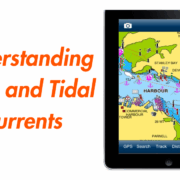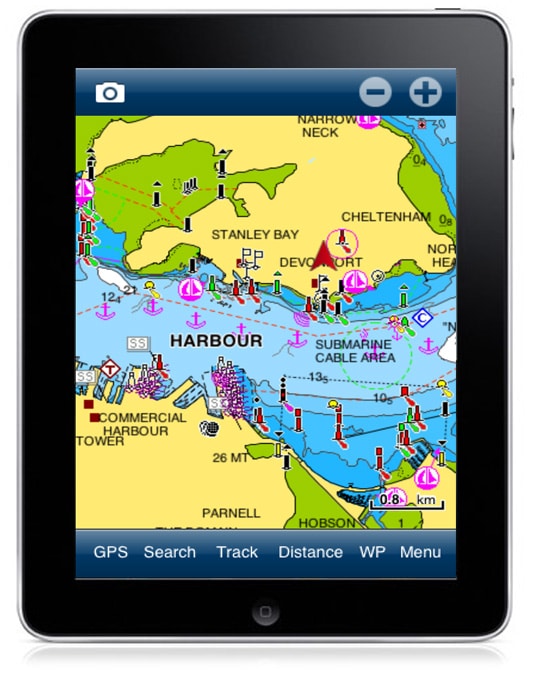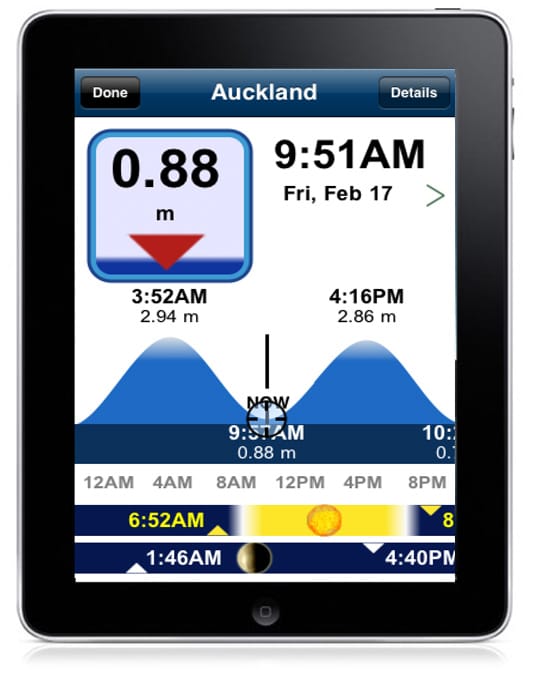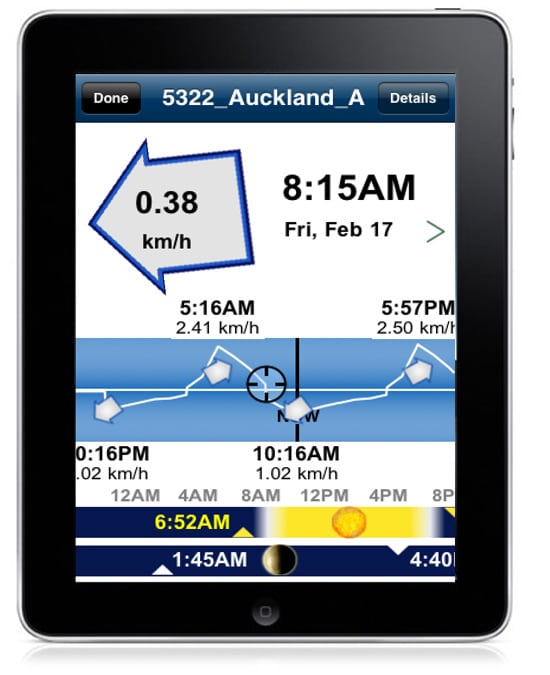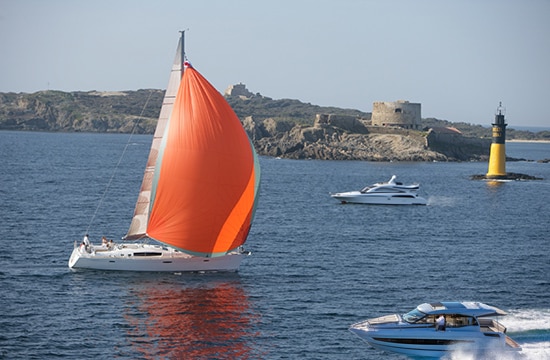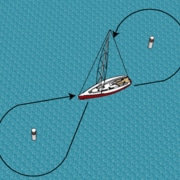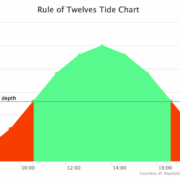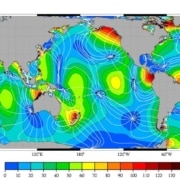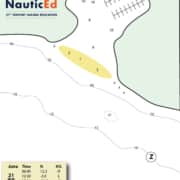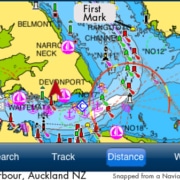Tides and Tidal Currents
Tides and tidal currents came to mind today as I strolled along the harbor’s edge watching the behaviour of some sailboats racing. Remembering a recent race regatta series I participated in in the Auckland New Zealand harbor last winter also brought up this topic of tides and tidal current. In one race in the series, we were racing back up the harbor while the tide was ebbing (going out). Consequently, the current was racing in the other direction. Our tactic was to stick to the sides of the harbor as close as possible where the current is the least. Unfortunately all the other boats knew to do this as well and this created a pretty big mess of all the fleet tacking on top of each other. “Starboard” was the call of the day as each boat established their stand-on position over the other. Every now and then one boat would break out and try to brave the current instead of the tacking mess only then to rejoin the fleet as they were dragged backwards. It was pretty exciting actually, although our skipper was stressing a little.
There was pretty much nothing we could do except tack tack tack and keep a very diligent watch for traffic ducking and tacking to give way when required. The skippers were trading expletives with each other across the water more in this race than I’d seen in any other. LOL
How Tidal Flow Works in a Harbor
In a channel, current will run strongest in the deepest parts typically towards the center, unless there is a bend in the channel then the current will run strongest on the outsides. Just think about the last time you watch water flowing in a river to visualize. So your best bet when trying the go against the tidal current is to hug close to the sides and on the inside turn if possible. At an extreme case I had a friend in Sydney harbor who won a race by waiting out the worst part of the tidal current by throwing down the anchor. Not sure if that’s against any official race rules but it’s pretty funny.
Also take note that current flows “relative” to the tide period but slack water does not necessarily match high and low tide times especially in harbors. Tidal current is determined by the local effects of the upstream harbour shape and weather, not just the sinusoidal tidal period. That comes as a big revelation to some. In fact, I physically had to show my skipper prior to the start of a race one day last winter.
Real Example of Tides in a Harbor
Observe the following which is Auckland New Zealand harbour, one of the more heavily raced harbors in the world.
Now look at today’s tidal period;
- High tide: 3:52 am
- ½ tide at 6:55 am ebbing (going out)
- Low tide: 9:57 am
- ½ tide 1:07pm flooding (coming in)
- High tide: 4:16 pm
- ½ tide: 7:22 pm ebbing (going out)
You might assume that minimum current occurs at high and low tides ie 3:52 am and 9:57 am and 4:16 pm while the max current occurs at ½ tides at 6:55 am and 1.07 pm
But now look at today’s current predictions:
- Min current flow was at 3:15am (45 minutes before high tide)
- Max current flow ebbing was at 5:16 am (1 hour 39 minutes before ½ tide ebbing)
- Min current flow was at 8:15 am (1 hour 45 minutes before low tide)
- Max current flow flooding at 10:54 am (2 hours 13 minutes before 1/2 tide flooding)
- Min Current flow at 3:51 pm (25 minutes before high tide)
- Max current flow ebbing at 5:57 pm (1 hour 25 minutes before ½ tide ebbing)
A quick analysis of this shows that the current matches in time the flooding tide more than the ebbing tide. This empirically supportis the statement above about how the upstream shape determines the current flow out.
As a specific example, lets say it is 8:30am on the day shown. From a tidal analysis you would think that the tide is ebbing and so an early morning race out of the harbour you’d probably stick to the centre of the channel. However the prudent sailor doing a current flow analysis would see that the current has already turned to flood and would stick to the sides of the channel. All things else being equal, prudence would win.
In General:
- Don’t assume that the current is slack at high and low tides
- Stick to the edges of the harbor when going against the flow
Navionics Electronic Chart
In this article I used the Navionics iPhone app. I pressed and held my finger over the diamond shaped T to get the tidal info and the diamond shaped C to get the current info. When you have such an electronic chart, look for these diamond T’s and C’s scattered through out. On iPhone and iPad simultaneously push the home button and the power button to get a screen shot.
Rule of Twelve
While we’re on the tidal topic I might as well discuss the rule of twelve regarding a sinusoid. It’s a good general piece of knowledge to know since tidal heights generally follow a sinusoid shape (except in weird tidal places in the world like the Solent in England where two high tides occur about 1 hour apart).
In the first 1/6th of the time between high and low tides, the height changes by only 1/12th of the full amount
In the next 1/6th the height changes by an additional 2/12 (=1/6)
In the 3rd 1/6th ie half tide the height changes by an additional 3/12 (1/4)
Adding 1/12 + 2/12 +3/12 = 1/2. So at half tide, the height has changed to ½. That makes sense but looking back and assuming a diurnal tide (6 hours between high and low), in the first hour the height has only changed by 1/12th. That’s insignificant. At the end of the 2nd hour the height has changed by a total of 3/12ths = ¼. That’s still pretty insignificant.
What this means is that if you’re relying upon the tide to increase the depth in a shallow area, then even with a 10 ft (3m) tide, 2 hours after low tide, it has only come up 2.5 ft (0.75m). Best you wait until half tide at least when the ½ of the height change has occurred (5 ft (1.5m) in this example).
NauticEd Coastal Navigation Sailing Course
For a full discussion on tides, tide table, how tides work and why there are two tides in one day when the earth and moon only rotate relatively about each other once per day, take the NauticEd coastal navigation sailing course. You’ll also be able to brush up on your navigational skills which isn’t at all a bad thing.
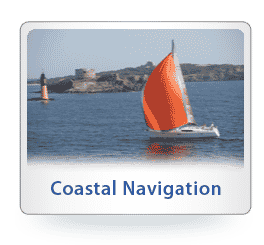
Coastal Navigation Sailing Course
This article was written by Grant Headifen, Educational Director for NauticEd Online Sailing School

